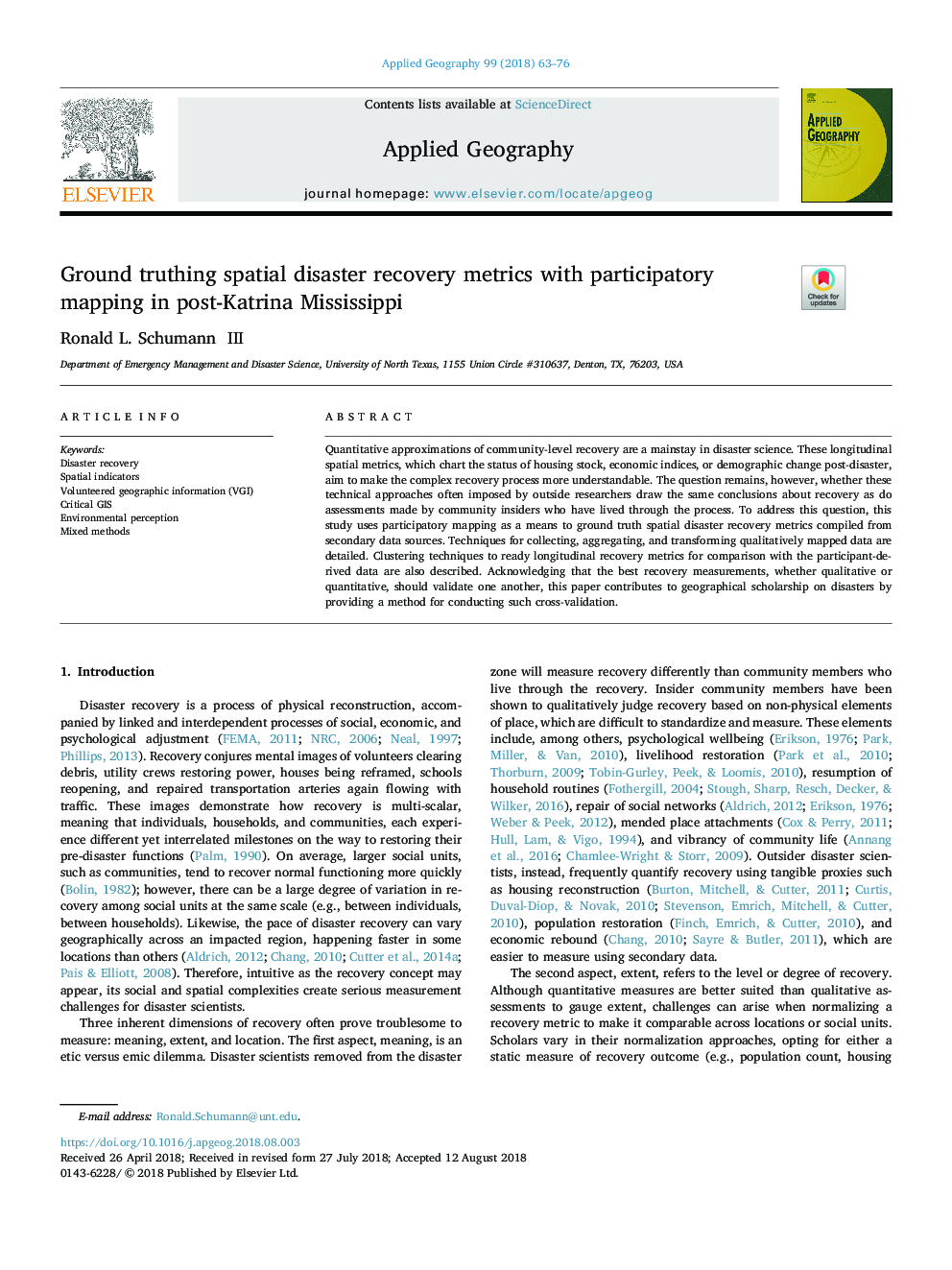| Article ID | Journal | Published Year | Pages | File Type |
|---|---|---|---|---|
| 9951689 | Applied Geography | 2018 | 14 Pages |
Abstract
Quantitative approximations of community-level recovery are a mainstay in disaster science. These longitudinal spatial metrics, which chart the status of housing stock, economic indices, or demographic change post-disaster, aim to make the complex recovery process more understandable. The question remains, however, whether these technical approaches often imposed by outside researchers draw the same conclusions about recovery as do assessments made by community insiders who have lived through the process. To address this question, this study uses participatory mapping as a means to ground truth spatial disaster recovery metrics compiled from secondary data sources. Techniques for collecting, aggregating, and transforming qualitatively mapped data are detailed. Clustering techniques to ready longitudinal recovery metrics for comparison with the participant-derived data are also described. Acknowledging that the best recovery measurements, whether qualitative or quantitative, should validate one another, this paper contributes to geographical scholarship on disasters by providing a method for conducting such cross-validation.
Keywords
Related Topics
Life Sciences
Agricultural and Biological Sciences
Forestry
Authors
Ronald L. III,
